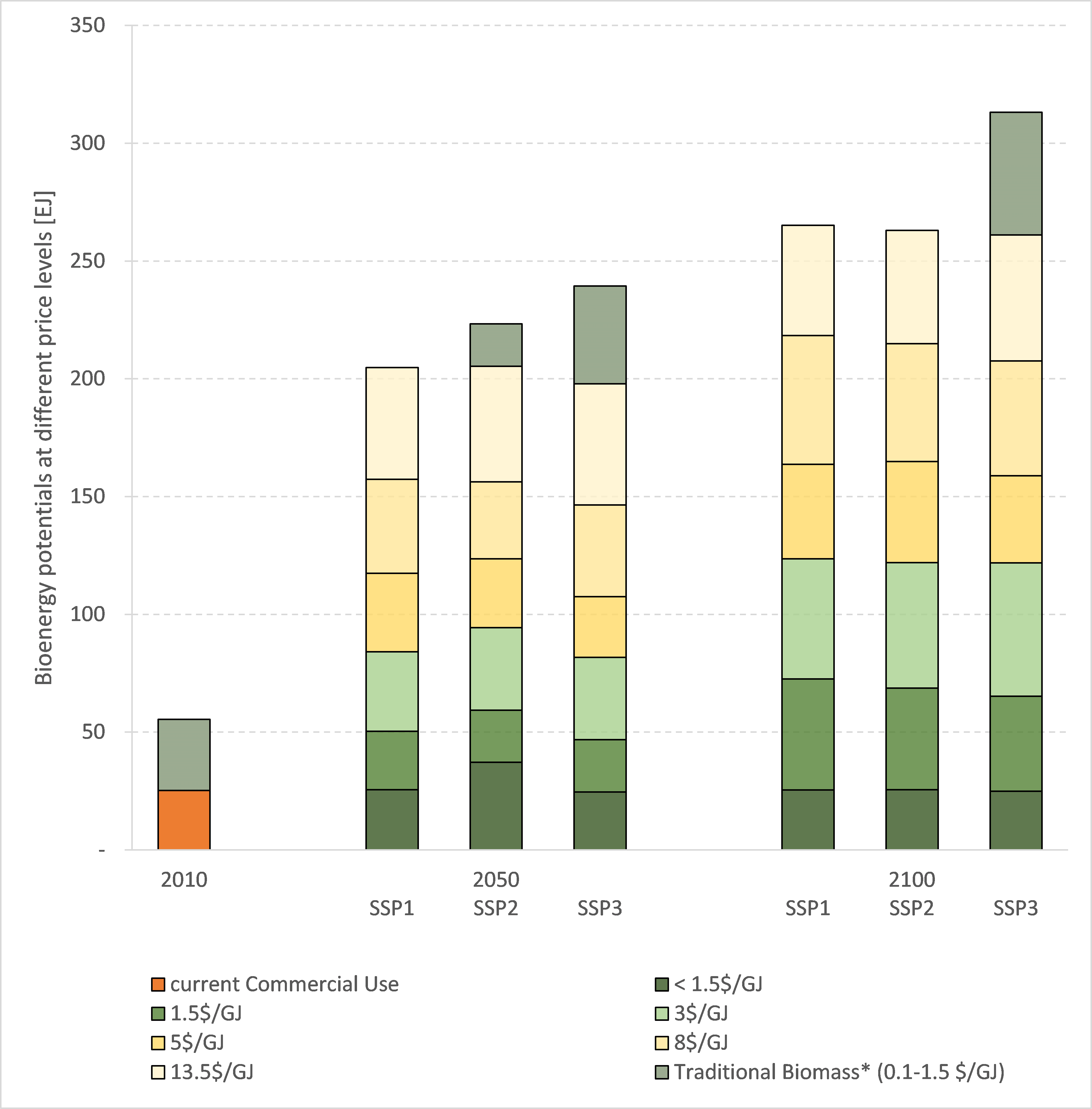Biomass Resources
Biomass energy is another potentially important renewable energy resource in the MESSAGE model. This includes both commercial and non-commercial use. Commercial refers to the use of bioenergy in, for example, power plants or biofuel refineries, while non-commercial refers to the use of bioenergy for residential heating and cooking, primarily in rural households of today’s developing countries. Bioenergy potentials are derived from the GLOBIOM model and differ across SSPs as a result of different levels of competition over land for food and fibre, but ultimately only vary to a limited degree (Fig. 6). The drivers underlying this competition are different land-use developments in the SSPs, which are determined by agricultural productivity and global demand for food consumption. (Fricko et al., 2017 [17])

Fig. 6 Global bioenergy potential. Availability of bioenergy at different price levels in the MESSAGE-GLOBIOM model for the three SSPs (Fricko et al., 2017 [17]). Typically non-commercial biomass is not traded or sold, however in some cases there is a market – prices range from 0.1-1.5$/GJ (Pachauri et al., 2013 [69]) ($ equals 2005 USD).